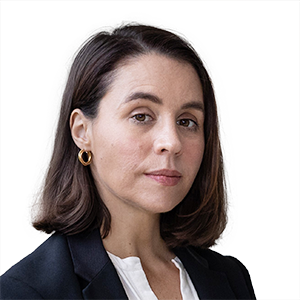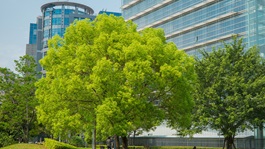The AFR National Infrastructure Summit 2019 was held in Melbourne for the first time on 12 and 13 June.
With the Federal election in the rear view mirror, it’s back to business on Australian infrastructure. Across the two-day Summit, the scale and duration of Australia’s infrastructure ‘boom’, and the challenges arising from it – such as political responses to population growth, congestion and congestion pricing, issues and engineering risks on mega projects, the regulatory instability impacting long-term investment and how we pay for it all – were brought into focus. Melbourne and Sydney, the two big epicentres of this boom, took centre stage to much of the conversation. New technology and data, and the power it has to transform this wave of infrastructure, was also keenly felt.
Two overarching messages resonated through this discussion:
- the need for clear, early planning and collaboration; and
- the need for community engagement in every aspect – lose the community and lose your stakeholders.
Here are the 5 key Summit takeaways:
1. Get the basics right: Major projects – it takes a village
Projects are getting bigger and more complex. The theme for successful projects discussed at the Summit all shared common ingredients: solid leadership, good planning, excellent communication and clear collaboration – it takes a strong team of experts to deliver the many facets of major projects. Any chinks in the chain were quickly recognised and rectified where possible. There is a certain level of complexity that is unavoidable in PPP projects but there is a lot that can be done to simplify processes and improve communication, particularly between government and contractors on PPPs. It was clear that maintaining confidence in the PPP model was critical.
There was a call for greater transparency on major projects, particularly as you tend to only hear about the “bad” projects – PPPs or other models. A balanced view is key and learning from those who have gone before is critical to avoiding the same issues and benefiting from the lessons learned. Community engagement is also critical to success. With so many disruptions arising from infrastructure construction, it is important for the community to understand the vision and the community benefits that will be created and to have a seat at the table. Dialogue with the community needs to evolve as a project progresses.
2. Procurement and risk – sharing the risk, can we get it right?
Procurement processes came under the spotlight once again. Last year, we heard from the NSW Premier, Gladys Berejiklian on the launch of the 10-point procurement plan the State was implementing. One year on and although NSW was not solely under the spotlight, there was a clear view that procurement processes have changed. However, today’s tendering process remains too arduous: overly detailed but with limited scope to work from (design changes are a constant pressure), and short response times that make delivering (and pricing) innovation difficult and accurately pricing for risk impossible when risks are unknown (a call was made for more government support here). The process needs to be viewed as an investment in the project and a not cost. Bidding fields are also challenging with contractors either pulling out or choosing not to bid because of the market power of other consortia. The impetus for change needs to come from the client.
There was some discussion on encouraging mid-tier firms to grow and expand and partner with industry and large contractors, as a way to increase the competition in the market and protect national interest. However, from a risk perspective, bigger projects only allow the big contractors to participate and mid-tiers find it difficult to take on any risk – how a project is ultimately put together can change the risk profile. Conversely, attention was drawn to the collapse of UK construction giant Carillion (which cost UK taxpayers an estimated £148m) and the question of whether under the same circumstances in Australia, there is enough local expertise to fill the gap – the view put forward was no. It was clear there is a need for sustainable delivery and a collaborative approach to risk allocation that allows greater competition with the large contractors and enables smaller companies to grow.
3. Designing for growth, can you really future proof a city – reality versus expectation
The dialogue surrounding our cities – those we live in now and those we will live in tomorrow – drew insights from a number of perspectives that culminated into two critical points: who has a say and how can we plan for the unknown. The two go hand in hand.
In discussions about getting it right and matching the infrastructure to the growth, City Deals was viewed as a critical part of this and the overarching Smart Cities plan. Australia currently has seven City Deals underway and two in the pipeline (Perth and South East Queensland), ranging from 5-15 year plans to deliver a shared vision of a sustainable, integrated, liveable city.
During the Summit, we heard from representatives for the Western Sydney, Darwin and Geelong City Deals, each outlining their vision, which was clearly tailored to their city and the expectations they had for their future growth. Transport and social infrastructure are necessary components and federal and state budgets have made the necessary provisions where possible for these to be realised. The next 12-18 months will see negotiations for two more proposed City Deals - South East Melbourne and North West Melbourne. City Deals require a partnership between the three levels of government and the community for them to work. One speaker noted that this is a game changer for local government leadership and a true win of the approach.
According to another Summit speaker, while high speed rail has been under investigation for decades, it seems we will have to wait a few decades more, as other critical infrastructure is underway. Despite the delay, the integration between city, transport and infrastructure remains an important element of city development to ensure all aspects are looked at for future development. The need to ‘future-proof’ our cities for how we want them to look in the future, including planned compulsory acquisition of property and confirming the ground work for current and future transport corridors, was reinforced a number of times.
4. …and the role of technology cannot be understated.
Technology is embedded in everything we do. It also attracts investment. Technology’s role formed a critical part of the smart, sustainable city dialogue, noting the plethora of data available to design for the future, supported by new technology being developed, to realise this vision. It was clear that technology’s role in de-risking projects and managing expectations is significant.
New infrastructure should take into account data and technological advances (despite how unrealistic some might be) to be better positioned in the future. Infrastructure development must be forward thinking and accommodate what our cities will look like in 30, 40 or 50 years’ time.
Digital twinning is a new technology that allows for a digital copy of a city, building, floor or room of a building to be re-created in 3D and then morphed into 4D to incorporate time into the model. The use of digital twins to create a digital replica of a city helps bridge the gap between the physical and the virtual world. This replication includes not only places but urban network systems such as transport and utilities with accurate modelling of how new roads / tunnels will impact traffic congestion or response time of emergency services or show how power is delivered through a city. Digital twins help perform real time optimisation and resilience mapping for future growth, which has been extremely beneficial in places like Singapore and for the development of smart cities. It has already been used to create Digital Twin NSW, which was developed with the CSIRO’s Data61 digital research network.
5. Where did the investors go?
Nowhere, for now, but Australia’s political instability, regulatory uncertainty and competitiveness are forcing investors to look at it differently.
Sovereign risk is the biggest hurdle for international investors looking to deploy capital in Australia. Relative to other developed countries, we have high political instability and with that comes regulatory uncertainty. Long-term investors, who typically take a 20-40 year view on their investments to generate the necessary yield to service their pension obligations, take these risks very seriously. This can be tough when regulation, environmental policy and foreign taxation is constantly changing. Such instability increases the risk of investment capital, which is more mobile than ever, being redeployed into other global markets.
Tax regimes in particular were noted as having the most potential to accelerate capital elsewhere, which is not a desirable outcome. We want to be seen as an attractive destination for capital to be deployed long-term. Having a stable tax regime, rather than one that changes with the politics, is much more important. The more that things change around the edges, the more uncertainty it creates. It’s just as much of an issue for Australia’s domestic funds too.
Investment funds are moving away from direct investment in new infrastructure projects in Australia and instead favouring asset recycling or reinvestment in existing assets to make them more efficient and get the most out of the asset.
The definition of infrastructure is also expanding. In Australia, this has included an increased focus and interest on: infrastructure / energy hybrid projects such as waste to energy; emerging infrastructure asset classes such as data centres; integrated PPP / property developments that cross over sectors such as student accommodation; and, in a privatisation context, a rethink of traditional infrastructure principles for non-conventional projects such as land titles sales. Other types of infrastructure that investors are looking to, include car parks, crematoriums, agricultural assets, healthcare, cultural centres and cruise terminals, to name a few. There is a trend in smaller, brownfield transactions where the risk is lower but so is the return.
One lasting key message was clear, and that is the risk / reward trade off is a global issue.
Norton Rose Fulbright was proud to be involved in a number of the sessions, with head of infrastructure and project finance, Jo Crew moderating a panel discussion on “Major Infrastructure Project Updates”; planning, environment and climate change partner Noni Shannon speaking on the “What opportunities lie ahead for Australia’s Smart Cities” panel; and regulatory partner Claire Forster speaking on “The Regulatory Approach to transport Infrastructure” panel.
Dawn Milkins,
Senior Business Development Manager









